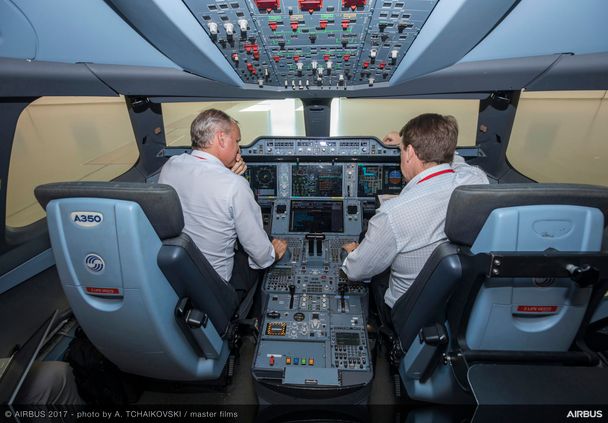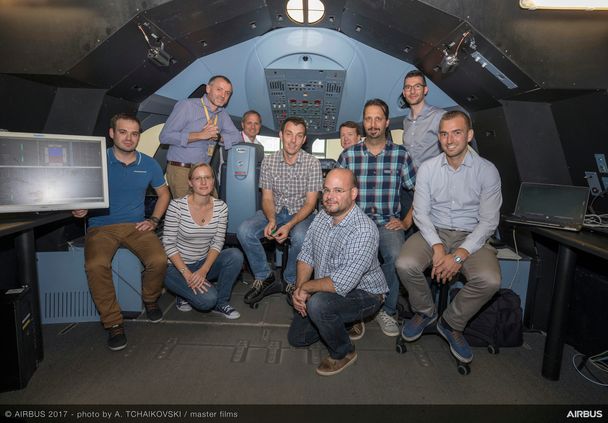Bringing airline experience into A350-1000 testing

As Airbus prepares for the service entry of its latest A350 XWB jetliner version – the A350-1000 – a new approach that for the first time puts customers’ pilots into ground-based flight simulators during the test campaign has proven so valuable that such sessions are set to become regular events.
The initial customer invited to participate was Cathay Pacific Airways – a long-time operator of Airbus jetliners, which is now flying the A350-900 version and has the longer-fuselage A350-1000 on order.
With the participation of Cathay Pacific cockpit crews in A350-1000 simulator sessions, the Airbus testing team soon confirmed that value of involving pilots who bring the experience from regularly flying airline routes.
“Our own pilots are brilliant at their jobs, testing everything as they should do according to the flight test orders; but they tend to operate as experts – as they’re completely familiar with our products and always are focussed on improving the aircraft,” explained Catalin Perju, head of testing for the A350 XWB at Airbus Commercial Aircraft. “Our customers’ pilots also are highly competent, but they work under procedures, processes and pressures specific to their own airlines, which make them interact with some systems a little differently, especially when it comes to mission-peripheral tasks. We decided to invite these pilots in, taking their interactions into account as well.”
Ensuring the A350-1000’s maturity for entry-in-service
One area where the Airbus team found a major difference was in the dispatching of aircraft during transit. Airline maintenance staff are under time pressure between flights, so they check if a system failure really exists using the fault confirmation procedure before following Airbus’ procedure based on the automatic log of failures and the minimum equipment list.
“If there is no system failure, they can fly without further investigation, so a potential delay is avoided,” explained Christophe Hocrelle, maintenance and flight operations engineer. “If there is a failure situation, we’ve now optimised our procedure to give airlines an answer more quickly to the crucial question: ‘Can we still fly?’”
The Airbus test team gathered other in-flight data that will heighten the maturity of the A350-1000 when it enters service, and will tailor each aircraft more closely to the needs of customers.
“We certainly feel that involving the airlines in our test campaign has brought benefits for us and the customers,” Hocrelle concluded. “So much so that we’re now planning at least two campaigns a year for the A350 XWB, and recommending it strongly to other Airbus programmes.”
Michael Lanson, an Airbus simulator test engineer, said the three-day simulator campaign with Cathay Pacific involved a month of pre-preparation, followed by a similar amount of time afterwards analysing the results.
“Once everything was completed, we learned a lot from this experience,” Lanson concluded. “And finding out that our customers were just as happy was great news. Knowing that an airline that will be flying the A350-1000 valued this work gave us all a boost.”
